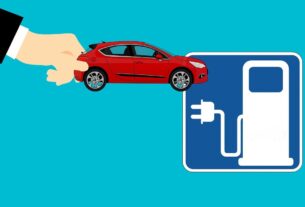As the demand for electric vehicles (EVs) continues to rise, so does the need for efficient and convenient charging methods. One such method is wireless charging. In this article, we will discuss wireless charging for electric vehicles, including its benefits, how it works, and its future prospects.
How Wireless Charging Works for Electric Vehicles
Wireless charging for electric vehicles uses a process called electromagnetic induction. This process uses an electromagnetic field to transfer energy wirelessly between two objects. In the case of wireless charging for EVs, the charging pad and the vehicle are the two objects.
The charging pad consists of a coil of wire that is connected to a power source. When electricity flows through the coil, it creates an electromagnetic field. When the vehicle is parked over the charging pad, a second coil of wire in the vehicle is aligned with the charging pad coil. The electromagnetic field induces an electric current in the coil in the vehicle, which is then converted to direct current (DC) by the vehicle’s onboard charger and stored in the battery.
Wireless charging is typically slower than traditional charging methods, but it is still an effective way to charge electric vehicles. The efficiency of the process and the convenience it offers make it an attractive option for many EV owners.
Benefits of Wireless Charging
Convenience
The primary benefit of wireless charging for EVs is its convenience. Unlike traditional charging methods that require the driver to plug the vehicle into a charging station, wireless charging allows the driver to simply park the vehicle over a charging pad. This eliminates the need for cables and connectors and makes charging much more convenient.
Safety
Wireless charging is also a safer option than traditional charging methods. The absence of cables and connectors reduces the risk of tripping hazards, electrocution, and other accidents. Additionally, wireless charging eliminates the risk of damage to charging cables and connectors, which can be costly to repair or replace.
Efficiency
Wireless charging is also more efficient than traditional charging methods. Traditional charging requires a direct connection between the charger and the vehicle, which can result in energy loss due to heat and electromagnetic interference. Wireless charging, on the other hand, uses electromagnetic induction to transfer energy wirelessly, which is a more efficient process.
Future Prospects of Wireless Charging for Electric Vehicles
Wireless charging for electric vehicles is still a relatively new technology, and it is not yet widely available. However, as the demand for EVs continues to rise, we can expect to see an increase in the adoption of wireless charging technology. Here are some of the developments and trends to watch out for:
Increased Efficiency
One area of research and development for wireless charging for EVs is increasing its efficiency. By improving the technology, it may be possible to reduce the charging time and increase the range of electric vehicles. Additionally, increased efficiency may lead to the development of more compact charging pads, making wireless charging a more viable option for home and public charging.
Standardization
One of the challenges facing wireless charging for electric vehicles is the lack of standardization. There are currently several different wireless charging technologies available, and they are not always compatible with each other. This can create confusion and limit the availability of wireless charging for EVs. However, efforts are underway to standardize wireless charging for electric vehicles, which would increase its adoption and make it more widely available.
Integration with Smart Grids
Another area of development for wireless charging for EVs is the integration with smart grids. By integrating wireless charging with smart grids, it may be possible to optimize the charging process to take advantage of renewable energy sources and reduce the strain on the electric grid. This would make electric vehicles even more sustainable and reduce their impact on the environment.
Conclusion
Wireless charging for electric vehicles is a promising technology that offers many benefits, including convenience, safety, and efficiency.



